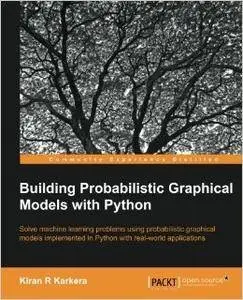Kiran R Karkera, "Building Probabilistic Graphical Models with Python"
English | 2014 | ISBN: 1783289007 | PDF | pages: 173 | 8.3 mb
English | 2014 | ISBN: 1783289007 | PDF | pages: 173 | 8.3 mb
Solve machine learning problems using probabilistic graphical models implemented in Python with real-world applications
About This Book
- Stretch the limits of machine learning by learning how graphical models provide an insight on particular problems, especially in high dimension areas such as image processing and NLP
- Solve real-world problems using Python libraries to run inferences using graphical models
- A practical, step-by-step guide that introduces readers to representation, inference, and learning using Python libraries best suited to each task
Who This Book Is For
If you are a data scientist who knows about machine learning and want to enhance your knowledge of graphical models, such as Bayes network, in order to use them to solve real-world problems using Python libraries, this book is for you.This book is intended for those who have some Python and machine learning experience, or are exploring the machine learning field.
What You Will Learn
- Create Bayesian networks and make inferences
- Learn the structure of causal Bayesian networks from data
- Gain an insight on algorithms that run inference
- Explore parameter estimation in Bayes nets with PyMC sampling
- Understand the complexity of running inference algorithms in Bayes networks
- Discover why graphical models can trump powerful classifiers in certain problems
In Detail
With the increasing prominence in machine learning and data science applications, probabilistic graphical models are a new tool that machine learning users can use to discover and analyze structures in complex problems. The variety of tools and algorithms under the PGM framework extend to many domains such as natural language processing, speech processing, image processing, and disease diagnosis.
You've probably heard of graphical models before, and you're keen to try out new landscapes in the machine learning area. This book gives you enough background information to get started on graphical models, while keeping the math to a minimum.



